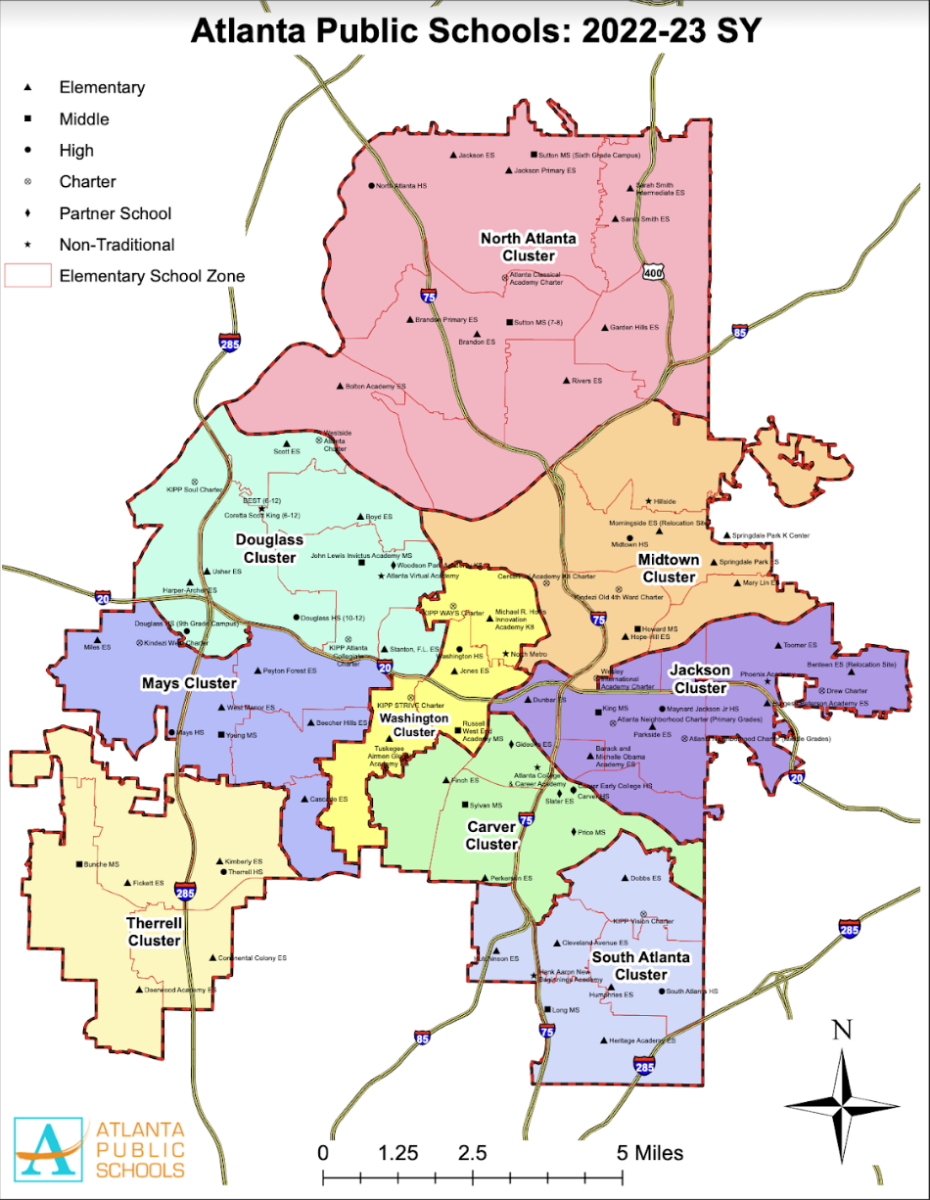North Atlanta High School is the largest school in the Atlanta Public School District, with a student population of nearly 3,000. Within the APS school district, there are 17 high schools and among those, NAHS is also considered one of the most highly rated schools. Throughout the district, there is a wide range of economic and social backgrounds among students.
Due to the geographic location of the school, within an affluent area in Atlanta, the high school itself reflects this nature. It is evident that North Atlanta highlights the disparities present within the school district, which spans across the Atlanta metropolis. Relatively wealthier areas, in this instance Buckhead and Midtown, fund schooling based on property taxes in the region which has generally further spawned increasingly economically segregated schools.
The top elementary schools in the APS district reveal a pattern of being found in relatively wealthy areas. Mary Lin Elementary is rated as the top elementary school in the APS district which is located in the midtown area, feeding into Midtown High School, then followed by Jackson Elementary School located within the Buckhead area. This consistent pattern of elementary schools leading to the success of the secondary school that it feeds into is a prime example of how districting leads to either success or failure within a school. The wealthier areas that schools such as Jackson Elementary and Lin inhabit, allow for more funding through taxpayer dollars. This funding then continues to go towards the secondary school, leading to the advancement and benefits for those schools, while the schools that do not thrive off of funding and additional taxes face further discrepancies.
Funding plays a critical role in each school’s ability to access the resources it needs. In Atlanta Public Schools, there is an imbalance based on the location of said school and the amount of money it receives. Additional factors that affect this are the population size of the school and Parent Teacher Student Association, or in some cases school foundations. North Atlanta is well known for the amount of money it receives from the North Atlanta Foundation. The foundation is composed of NAHS parents, teachers who serve on the foundation board, and the principal. Funding helps with initiatives that go above and beyond what the district will pay for and support the school’s needs. “They want to see that every student at North Atlanta succeeds and ensures that everything is passed with the board,” Principal Douglass said. However, this creates disparities within the district because not every school is allotted this same opportunity.
It’s imperative that these discrepancies are discussed. The continuation of institutional racism within the educational system in the Atlanta Public Schools district can be seen as the reason for the disparities found throughout many of the lesser-funded schools. The process of redlining, districting and zoning to its core is rooted in racial discrimination can be seen as the direct contributor as to why imbalances within different schools in the same district are a major issue in the Atlanta Public School District. Exclusive zones established centuries before the current economic crisis have remained intact and have since contributed to a social perception of homeownership in low-income neighborhoods, despite the prices of homes. This, in turn, has resulted in the stagnancy of property values throughout Atlanta’s neighborhoods for decades and, since property taxes are allotted to school zones, various schools in Atlanta have highly different funding. It’s important to take these factors into consideration before making unjust assumptions.














